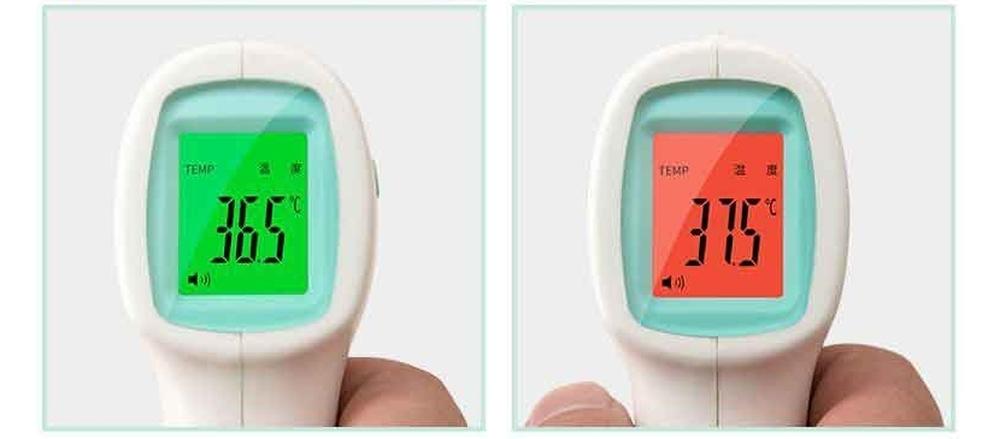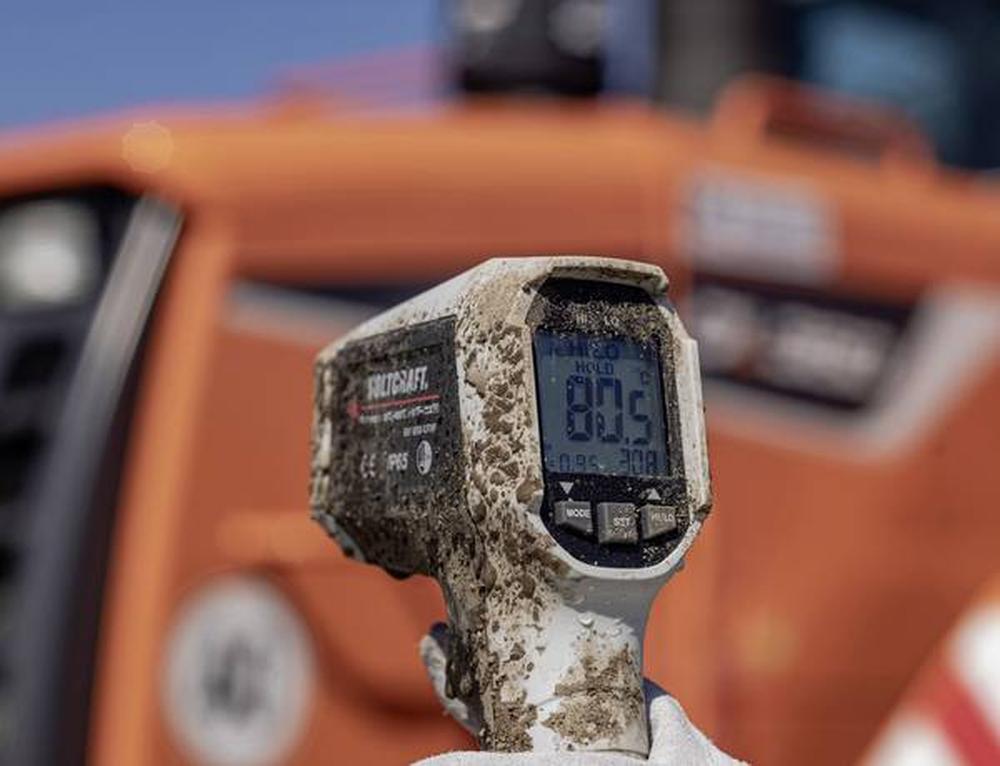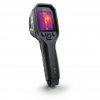Industrial infrared thermometers (spotmeters) and similarly infrared cameras are calibrated for a wide range of measured and operating temperatures. They usually have a resolution of 0.1°C, but their basic (in-) accuracy is usually ± 1.5 to 2.5°C.
Although industrial infrared thermometers are much more advanced instruments than conventional medical thermometers, compared to them, they have a significantly higher basic inaccuracy. Medical thermometers are more accurate because they are usually calibrated for a very narrow temperature range (approx. 34-44°C). However, this does not exclude the possibility of using an industrial thermometer for this purpose; we just need to find out what is the basic deviation of the device.
The solution for measuring with an industrial IR thermometer is a proportional, alias relative measurement. In other words, we need to find out what the deviation of our industrial thermometer is in comparison with the temperature normal.
If we measure a healthy person’s temperature and get a certain value, e.g. 34°C, it is practically certain that if we measure 36°C for someone else, then this person has an increased temperature, i.e. their forehead is warmer by 2°C than other people measured.
It is good to repeat the measurement several times at this “calibration”. This way we check whether the thermometer still shows the same result (or only a small deviation) even after several measurements of an object with a constant temperature. For example, the wall of the office in the interior, which usually has a very stable temperature within a few minutes, will serve us well for the verification.
The emissivity of the human body is about 0.98, so if the thermometer allows it, we recommend setting it on the device in this way.
Another important factor that we should not forget is that the human forehead has a real body temperature only rarely. Even if we measure with an accurate thermometer with a deviation of, for example, ± 0.1°C, it seldom shows a temperature of 36-36.5°C, as if we would get by measuring in the armpit. This is because the forehead temperature is quite strongly dependent on the ambient temperature and, especially in colder and windier weather, it can be significantly lower than the actual body temperature.
Field of view - the angle of view of medical thermometers is usually wider than that of industrial thermometers, but in practice, this is not a problem at all. Conventional medical thermometers are designed to measure from a distance of 1 to 5cm and often do not even have optics, so they read with a ratio of 1:1 to 1:3.
Industrial IR thermometers usually feature 1:8 to 1:20 optics and thus measure a smaller face area, at the same measuring distance. A narrower sensing angle of industrial thermometers can, therefore, be an advantage, as it allows measuring from a greater distance, e.g. 20cm.
In conclusion, we can say that with the help of the mentioned simple "calibration" we can get reliable results of measuring body temperature with industrial IR thermometers. Of course, measuring body temperature with a medical thermometer remains the simplest possible way to measure the temperature of the human body. The resolution of both types of thermometers is usually the same: 0.1°C.
If you have any questions about the measurement as such or about specific industrial IR thermometers or cameras, we will be happy to advise you at sales@soselectronic.com
Do you like our articles? Do not miss any of them! You do not have to worry about anything, we will arrange delivery to you.





















